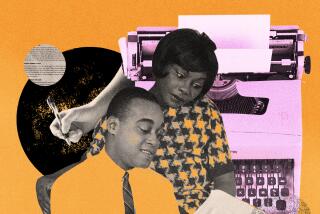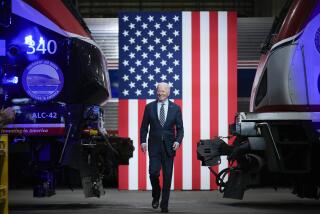Study Sees No Bias in Coverage of ’92 Race : Media: UC Irvine and other researchers praise the fairness of newspaper articles on the presidential campaign, but note that not enough ink was devoted to the issues.
- Share via
IRVINE — U.S. newspapers were not biased in their coverage of the Bush-Clinton-Perot 1992 presidential campaign, according to a scholarly analysis by researchers at UC Irvine, Indiana University and Ohio State University.
The researchers analyzed 47 major daily newspapers throughout the United States, including the Los Angeles Times. Initial results of the study were released Thursday.
Russell Dalton, a UCI political science professor who was one of the study’s authors, said he thinks newspapers drew unwarranted criticism during the 1992 campaign.
“Despite accusations from all sides, there is not evidence of systematic bias among the nation’s newspapers,” Dalton said. “In fact, we found quite the opposite.” He said that the study, for instance, found that a newspaper’s editorial endorsement of a candidate clearly did not affect objective news coverage of other candidates.
“My own sense is that the media did a pretty good job,” Dalton said.
But while Dalton and the other university researchers praised the fairness of newspaper campaign coverage, they said newspapers in 1992 mainly covered the day-to-day political jockeying. Newspapers seldom covered major issues, the researchers said.
“The vast majority of the news stories of the 1992 presidential campaign were those that highlighted the race itself,” the report said. “With the exception of the economy, relatively little attention was devoted to the substantive issues of the election. . . . Retrospective concerns surrounding the past performance of the candidates or their platforms received surprisingly little attention.”
Nonetheless, the study found that newspapers gave “substantial attention to the campaign.” The researchers also found that the more coverage a newspaper gave to the campaign, the more interest there appeared to be among readers.
The research project was paid for by a $253,000 grant from the National Science Foundation and an additional $20,000 grant from the private Joyce Foundation of Chicago.
The project involved studying all newspaper articles about the 1992 presidential campaign from Labor Day to Election Day last year. That period was picked because campaigns are more concentrated and intense during final weeks, Dalton said.
The researchers picked 40 counties throughout the United States in which to analyze newspapers. The counties were selected based on various census data, he said.
In addition to analyzing the newspapers, the researchers randomly called about 1,300 people who lived in those counties. Those polled by telephone were asked if they believed their local newspaper favored a particular presidential candidate in its coverage. Of those polled, 42% said their newspaper was not partial to any candidate. Of those readers suspecting bias, 40% said they thought their newspaper favored Democrat Bill Clinton; 12% said they thought the paper tilted to Republican George Bush, and 2% said either independent Ross Perot or a “mix of candidates” benefited from newspaper bias. Four percent said they were not sure.
In analyzing newspaper articles, the researchers determined whether an article created a positive or negative image of a candidate. They found that of the articles analyzed, 47% cast a negative image of Bush, while only 22% gave a negative concept of Clinton. The researchers said newspaper bias did not cause this difference in news stories, but rather Bush’s “negative campaign.”
The study said: “Bush pursued a predominantly negative campaign: attacking his opponents, criticizing their politics, and belittling the opposition. . . . Clinton had a more upbeat, optimistic style in the campaign.”
The analysis did not have a percentage figure for “negative image” articles about Perot. The study said there were few newspaper stories about Perot “because of the candidate’s withdrawal from the campaign until October.” The study added: “Among those stories on Perot that had an evaluative content, negative stories outnumbered positive stories by a 2-to-1 ratio.”
Newspapers analyzed in the study ranged from the Paris (Tex.) News, with a circulation of 12,000 to the Los Angeles Times, with circulation of more than 1 million.
The initial results issued Thursday included 43 newspapers. Final data about the Los Angeles Times, the Washington Post, the New York Times and the San Francisco Chronicle will be included in a later report. But Scott Nelson, a spokesman for UC Irvine, said the initial report’s overall conclusions will remain the same when those four newspapers are included.
More to Read
Sign up for Essential California
The most important California stories and recommendations in your inbox every morning.
You may occasionally receive promotional content from the Los Angeles Times.













